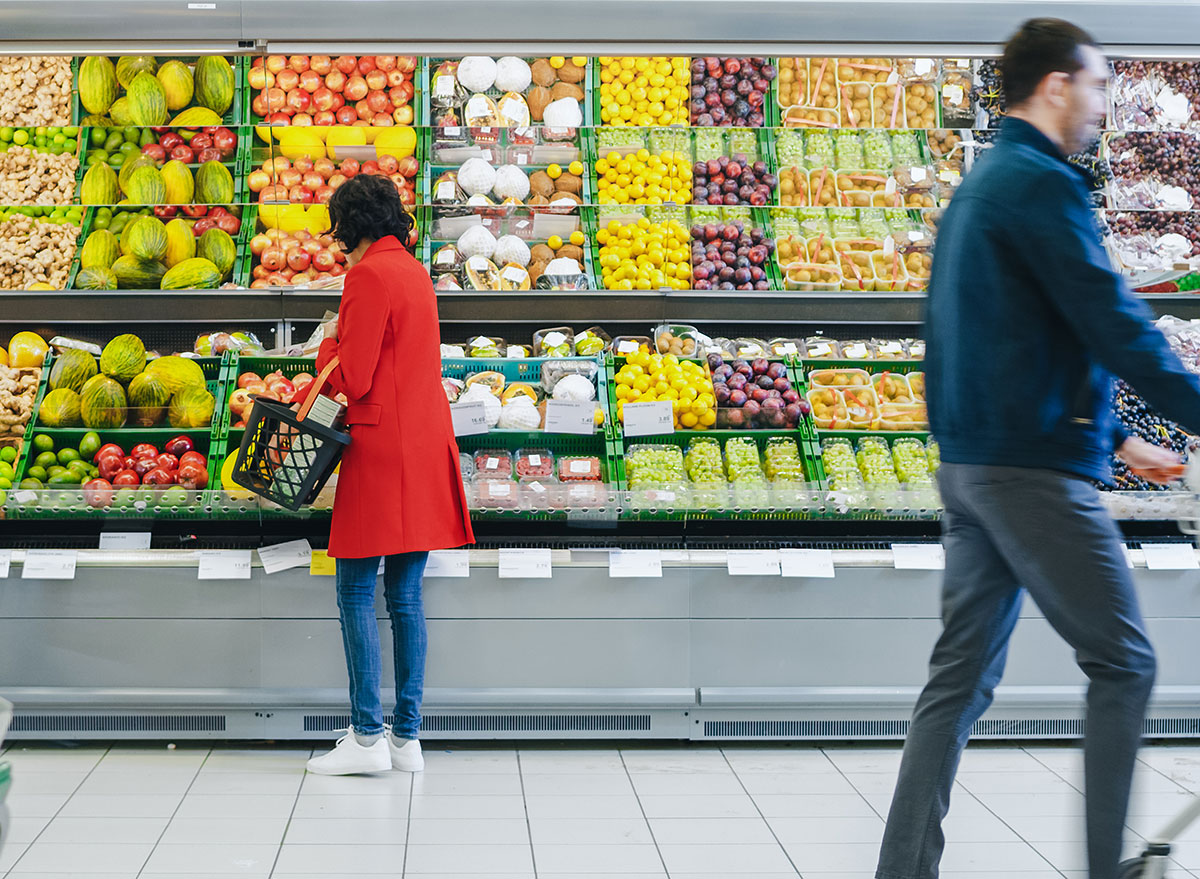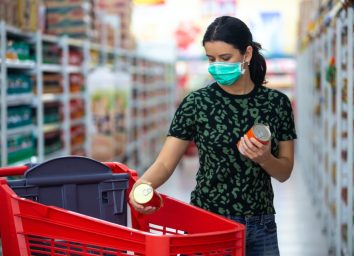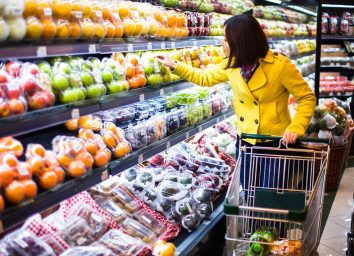The Worst Thing You’re Doing While Grocery Shopping That Infuriates Others

Grocery shopping has become a weirdly hazardous experience in this COVID-19 era, requiring caution and vigilance as you pick up the food you need to feed yourself and/or your family. But as careful as you might be, once you’re moving through the store, old habits kick in and you may find yourself so focused on getting the ingredients for that lasagna or tacos that you forget for a moment that there’s a global pandemic going on.
It’s moments like these that we may end up doing the one thing that will cause alarm, annoyance, and unnecessary risk for other shoppers and grocery workers alike: Ignoring those one-way arrows in the aisle.
Since the pandemic hit, most grocery stores, including Walmart, Kroger, and Giant, have instituted a one-way policy in their aisles, requiring shoppers to move in one direction, thereby avoiding congestion or the likelihood that shoppers will bump into one another.
“Research from airlines shows that the risk increases when people are passing close to each other moving in opposite directions,” says Amy Baxter, M.D., an emergency medical doctor and pain management specialist who founded of Pain Care Labs based in Atlanta, Georgia. “Moving in a single direction helps because you’re not going to be face-to-face with another customer as you pass down the aisles—there’s less chance someone may cough directly in your face.” (Related: These are the Most High-Risk Times to Visit the Grocery Store.)
While this is a smart practice that’s been found to be effective, following the one-way arrows is also a move that many shoppers—who suddenly realize they need a can of soup that’s halfway down an aisle going in the wrong direction—choose to ignore.
“In grocery stores, balancing the need to encourage people to complete errands quickly with keeping people at a six-foot distance is a challenge,” says Leann Poston, M.D., medical expert with Invigor Medical. “Stores have marked aisles as one-way in order to speed up transit through the store while still keeping people at a distance. Ignoring these markings can lead to a larger group of people in the same aisles or frustration expressed by other shoppers as they have followed the markings even when it is inconvenient for them.”
Chad Sanborn, M.D., an infectious disease pediatrician at KIDZ Medical Services, agrees that the one-way signs are helpful with ensuring social distancing, and should be respected.
“Ignoring those signs will increase the chances that you will pass too closely to the person next to you in the aisle, where staying six feet apart with two-way traffic is virtually impossible,” Dr. Sanborn says. “The signs also serve as a reminder to not get too close to the person in front of you in the aisle. If everyone ignores the one-way signs, in theory, you could have two clouds of droplets drifting in different directions in an already small aisle, which is a problem.”
While it’s important that you follow the arrows, the fact that you can’t assume every other shopper will follow these rules means you’ll want to play a bit of defense when going on your shopping trip. According to Dr. Baxter, that means wearing a mask, which will keep viral particles to yourself, and “keep you from sniffing in a big viral load from a sneezer ahead of you.”
She adds that most viral cases come through the nose rather than eyes or mouth, so don’t let your mask sag, and adds that shoppers should “keep a small thing of sanitizer in your car door, to douse your hands before you touch your steering wheel, and when you get home from the store toss the mask in the wash.”
Dusan Goljic, a board-certified pharmacist and co-founder of DealsOnHealth, agrees that respecting the one-way arrows is important. “But, I think the best way to stay safe is to properly clean the groceries after purchasing them, wear masks, avoiding touching your face with your hands, and having fewer purchases in indoor stores.”
For more, check out these 6 mistakes at the grocery store you can’t afford to make right now, and make sure to sign up for our newsletter to keep yourself informed on the latest grocery shopping news.








